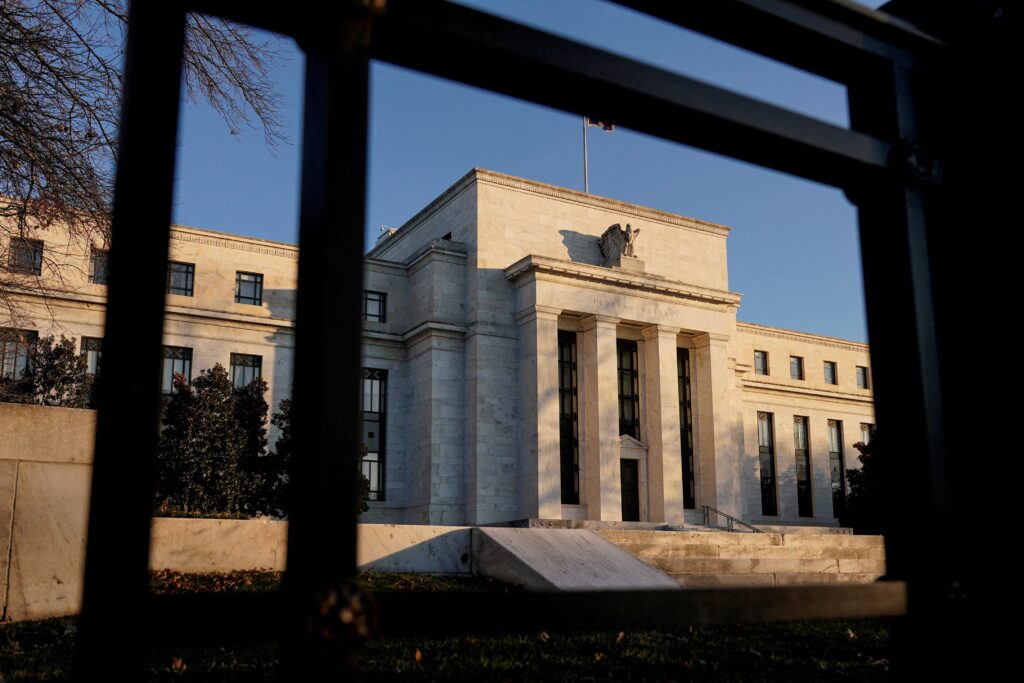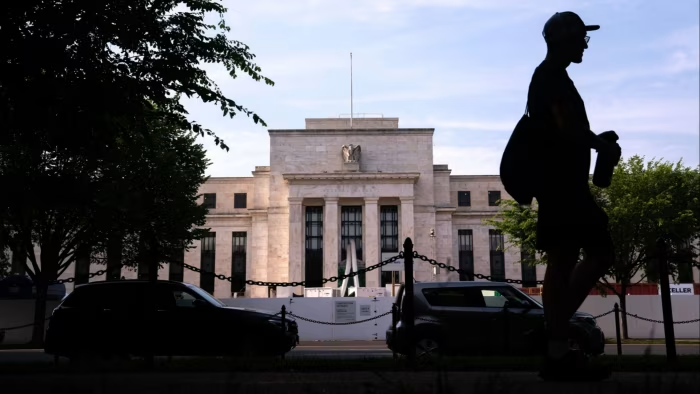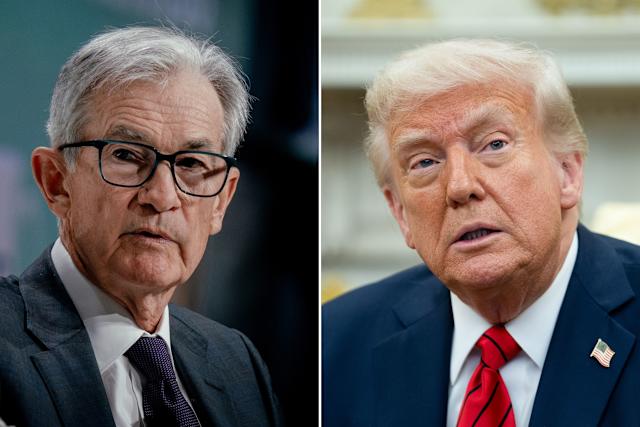The Federal Reserve stuck to its federal funds rate of 4.25%–4.50% this week, exhibiting care and vigilance in light of a still ambiguous tone in the signals coming from different indicators of inflation, economic growth and international trade. However, it is the stark debate among the members (seven of them!) about no rate cuts in 2025 that best reflects the situation behind the move and still visible is the very complex Fed in monetary policy adjustment.

1. Why the Fed Maintains the Interest Rate Unchanged
According to Fed Chair Powell, the central bank’s mainly reliant on data stance is to stay in control of the situation while the inflation that is induced by tariffs is unknown. Officially, the concern is that if the slackening of interest rates happens sooner than needed, the price levels may surge again or the achievements of the era-long rate hikes from 2020, that have been directed at inflation, can be eradicated.
The match of the current decision reflects a bigger turnover in strategy as before the anticipated changes concerning the interest rates were only downward, but now the newer statistics, like salary growth, the consistency demonstrated by core inflation and exports, have consolidated the Fed’s determination to remain steady.
2. FOMC Dot Plot Analysis: Reading the Disagreement
There’s a story told by the latest FOMC dot plot analysis. In a group of 19 officials, of seven we now hear no rate cuts by the close of the year. About eight people have not changed opinion and still believe that by the end of the year there will be two cuts because of one percent reduction. To make the point even clearer, two are in expectation of one cut, making the dissent more evident.
This division in the Fed’s compliance with tariffs underlines the presence of caution caused by the impact of trade and war. As a result, the center-line projection still reflects the idea of two cuts, but the probability that even this may not be enough doesn’t decrease.
3. Who Opposes Rate Cuts—and Why
Certain key figures who are against the idea of cuts include people like Mary Daly from San Francisco and Tom Barkin from Richmond. They mention inflation that is still persistent and the issue of tariffs as the reasons that they do not agree that cuts should be made.
Also, the fed composition is divided into doves and hawks where dovish members of the FOMC, Christopher Waller and Michelle Bowman (Trump appointees), prefer the use of a less restrictive policy, speaking of cuts in July, as they see stable inflation figures and a softening labor market. Through the collective agreement of this split opinion process, the intervention of the Federal Reserve System is apparent and leaves a considerable margin of the process’ discretion to decisions determined by the diverging courses of the two opposing fractions, the latter of which is always confrontational.

4. Inflation, Tariffs, and the Broader Economic Picture
This tug of war over tariffs is by no means over. Powell and his colleagues are keen to highlight that actions “of the trade policy yet on prices” are not fully known. That is to say, the ongoing tariffs that bring about rising inflation from the cost of imports have also the same effect of cutting rates thus the path to stabilizing prices keeps changing.
Fears of stagflation (frictional unemployment, cost-push inflation, and a drop in demand) have led to the current situation where expectant views on markdown issues are short-lived as the Fed is now pessimistic after a series of predictive failures and the realization of the fact that the economy’s churn rate has slowed way beneath the target and gaged unemployment has been said to be heavily affected.
5. What the 2025 Rate Cut Forecast Actually Means
As contradictory as this seems, the dominant forecast for 2025 still manages to stick to the common frequency of two periodical cuts, in September and December being the top candidates for this purpose. By adopting this approach, the Federal Reserve is determined to signal to the market that it is ready to stimulate the economy but is willing to react slowly to those positive signals which are correctness about inflation and a clear situation on the issue of tariffs.
Although surveys point towards the expectation of two cuts for the 2025 rates, with seven members at a zero-cuts position, it cannot be ruled out that the central bank blooms with another batch of new predictions as in last March.
6. Political Pressure and Fed Independence
It is a pity to have to deal with political games. By the way, when asked by the media if he considered the responsibility of the position as chair of the Fed and the pressure that goes with it, he pointed out that it is his duty to conduct himself. The ex-President Mr. Trump attacked the chairman of the Federal Reserve directly, by using his powers to make a tight money policy being implemented by the Fed governor. Not surprisingly, Trump openly asked the central bank head to lower the federal funds rate more aggressively. Despite this, the government could contribute to the solution by improving the regulatory framework and reducing the tax burden. The political establishment is undoubtedly one of the variables characterized by a high degree of complexity and prompted clashes among the politicians. However, the new leadership team of the Federal Reserve System of the United States of America has not yet proven that they are able to follow this path because they may have qualm. The reality of the matter is although the decision to raise money has been taken by the central bank, the statement will only be filed with the president if it agrees with the policy of the government and if it does not stifle the cause of development.
Nevertheless, intlima is the reserve of the Federal Reserve, and the Fed’s Chair Jerome Powell keeps on saying that the choices that the Fed makes are not a result of political conversations but the practice of coherence – and data.
7. Risks Ahead: Inflation & Tariff Shocks
What are the possible variables to be considered in the calculation?
Persistent Imported Inflation: Tariffs can cause the consumer price index to spiral upwards, giving monetary authorities an excuse not to cut rates.
Labor Market Fragility: Since the beginning of the new year, more and more signs have appeared that the economy has been going south, hence possibly justifying the argument that doves should be the ones in favor of the rate cut.
Geopolitical Hotspots: The crisis that may arise from the bombings in the Middle East or the nearing of the war in other locations may bring the energy industry to a standstill, setting the tone for inflationary periods to come suggesting that there is the aspect of risk and the result is still far away, but it would be partly wiser to stay on the same page on the part of the development process.
Such risks make the Federal Reserve policy a divergence, leading the decision in favor of the wait-and-see approach.
8. Implications for Markets and Borrowers
The cautious Fed’s position is affecting everyone, in particular, the following groups, and in the following ways:
- Markets: The exacting monetary conditions lead to the bond issuance with unattractive yields and reduce the speed of the stock valuations growth. Markets are now pricing in only two cuts. The trust of special faith is growing at selected financial markets of the globe.
- Borrowers & Consumers: Interest rates are still high, and as a result, housing and business investment are negatively affected by higher mortgage and loan costs.
- Global Economy: The economies which are susceptible to the actions of the US Fed are likely to experience capital flow volatility if the U.S. has a clear policy direction.

9. How to Navigate This Policy Divide
For the market participants and those who save:
- Be observant when it comes to communication from the Fed and the shifts that are related to the dot plot.
- To hedge your bets in the event when the current pace of cuts will come to a halt, it is pivotal to focus on shorter maturity bonds.
- Observe inflationary trends and tariff relations closely.
For consumers:
- Avail borrowing facilities at a fixed or capped rate whenever it is possible.
- Plan to cope with the
Final Thoughts: A Divided Fed at a Pivotal Moment
The stand-still of the Fed interest rates decision depicts the reluctant and data-led position of the Board. On the other hand, the gap between the ideologies has just rung the bell on the rising concern: to opt for a cut to help the economy or to raise just-in-case inflation does the magic?
The 2025 rate cut prediction remains hypothetical since a part of the Federal Open Market Committee’s members is against easing, this implies that the timeline and the use of the dot-plot for adjustment purposes are uncertain. To sum up, the difference in the path that the members of the Federal Reserve want to follow confirms the intricacy of economic geography—the teams of people are in the process of discussing and taking actions on how to maintain or reduce inflation & thereby ensure or enhance global growth.
The current positioning of the Fed in the presence of uncertainties relates to the fact that the art of managing the flow of the currency is not without trial and error. The question is not whether the Federal Reserve will reduce interest rates, rather it is the matter of the time when it is done and the care with which it is executed.